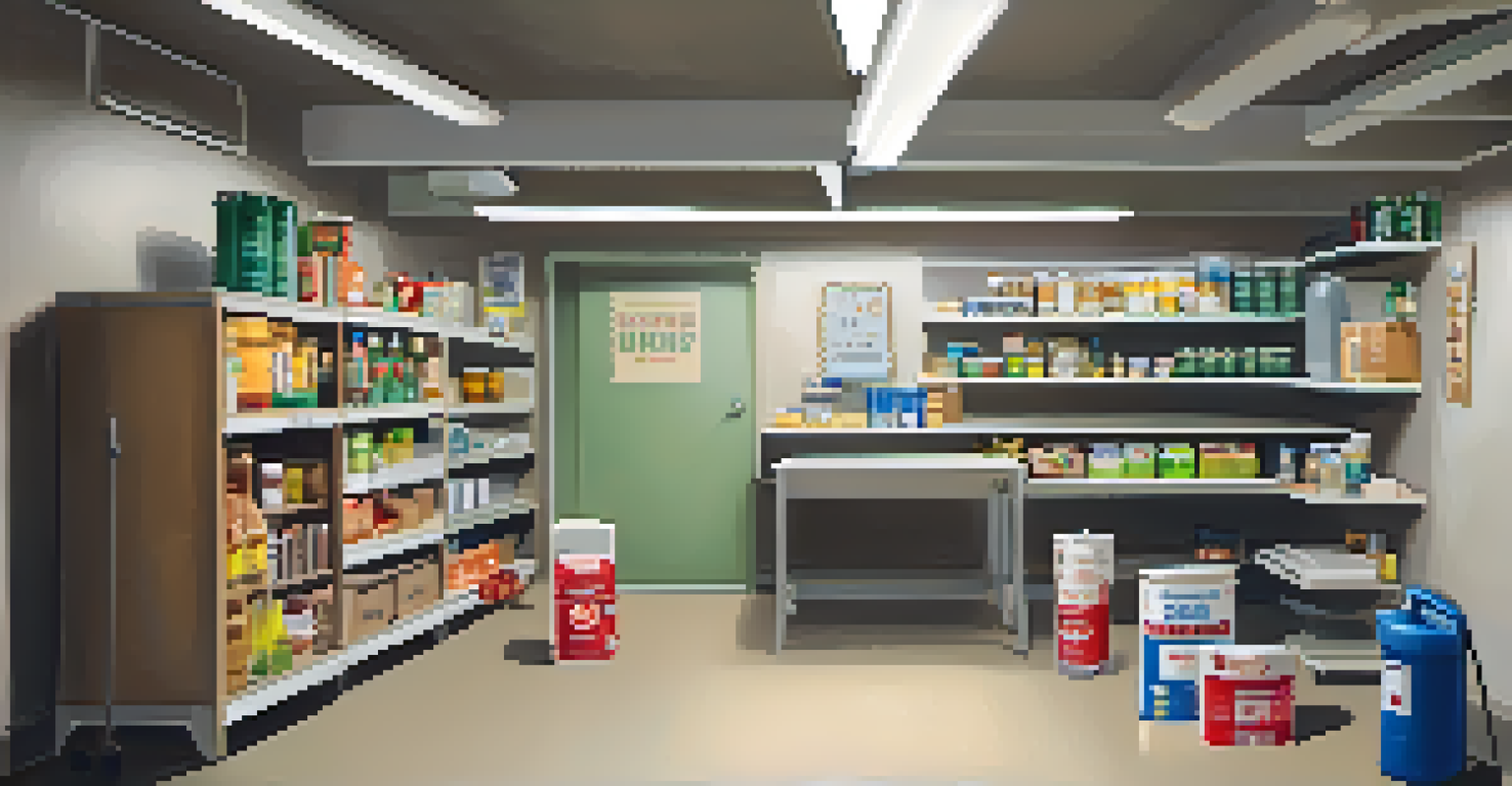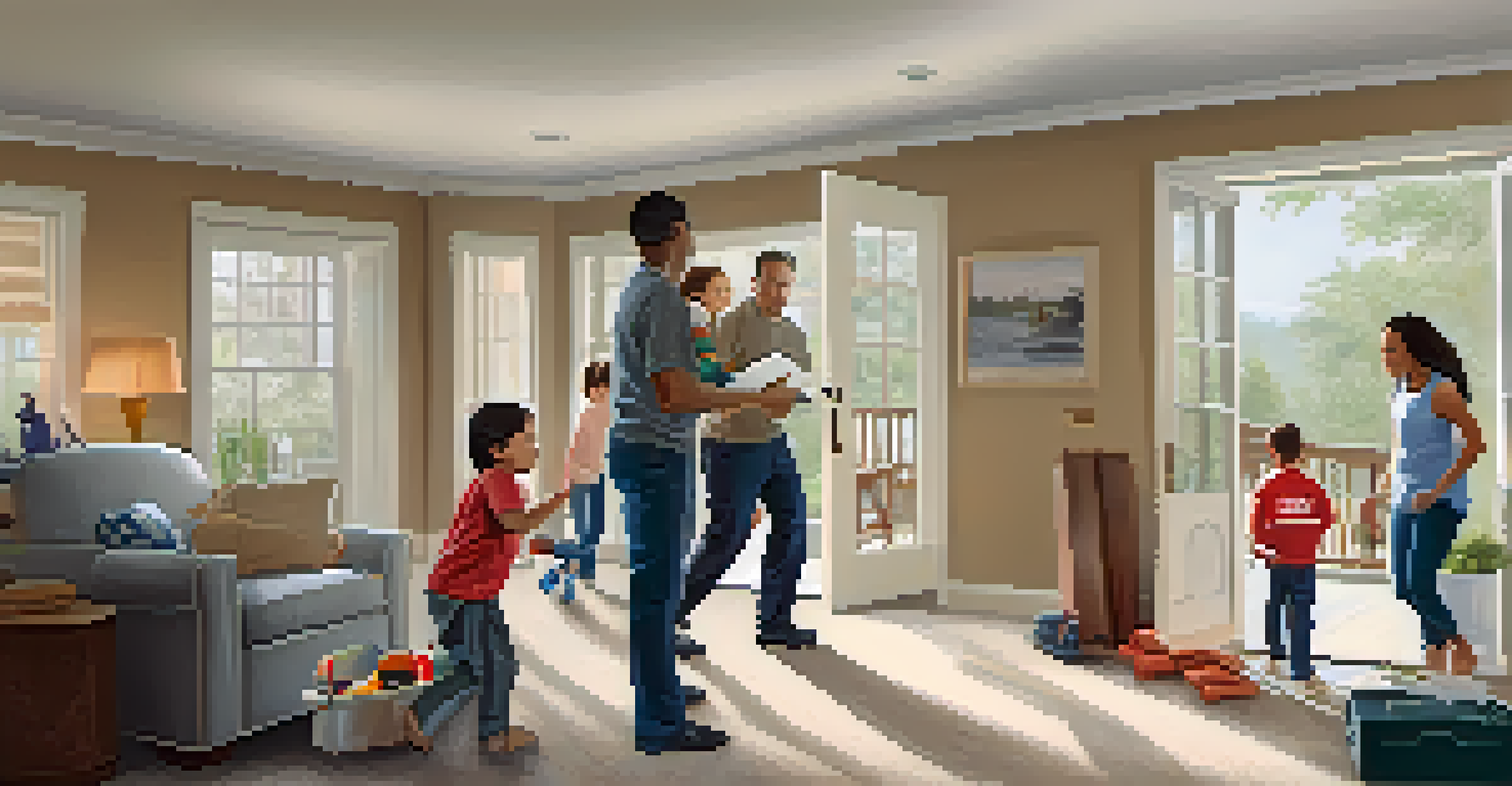How to Create a Safe Space in Your Home for Emergencies

Understanding the Importance of a Safe Space
Emergencies can happen at any time, and having a designated safe space in your home is crucial. This area can provide shelter, safety, and comfort during stressful situations, whether it’s a natural disaster or a home intrusion. Think of it as your personal sanctuary, a place where you and your loved ones can regroup and find safety.
By failing to prepare, you are preparing to fail.
Creating this space not only helps in emergencies but also fosters a sense of security and preparedness. When everyone knows where to go, it can reduce panic and increase safety during a crisis. It’s about being proactive rather than reactive, ensuring that you have a plan in place.
Moreover, having a safe space can also serve as a mental relief, knowing that you have a strategy in case something goes wrong. It’s like having an umbrella on a cloudy day—sometimes it might not rain, but it’s comforting to know you’re ready for anything.
Choosing the Right Location for Your Safe Space
The first step in creating a safe space is selecting the right location in your home. Ideally, this area should be away from windows and external doors to minimize exposure during emergencies. A basement, interior room, or a bathroom can often serve well as a safe haven.

Consider the accessibility of the space as well. You want to ensure that all family members can easily reach this area, even in stressful situations. For instance, if you have young children or elderly individuals in your home, ensure the route is clear and safe.
Importance of a Safe Space
Having a designated safe space in your home provides essential shelter and comfort during emergencies.
Lastly, think about potential hazards in your chosen location. Avoid areas that could become dangerous, such as those that might flood or are near heavy objects that could fall. The goal is to create a space that prioritizes safety and security.
Stocking Your Safe Space with Emergency Supplies
Once you’ve chosen the perfect spot, it’s time to stock it with essential supplies. A well-prepared safe space should include non-perishable food, water, first aid kits, and any necessary medications. Think of it as your emergency survival kit, ensuring you have what you need to last until help arrives.
An ounce of prevention is worth a pound of cure.
Don’t forget to include items like flashlights, batteries, and a portable phone charger. In a power outage or after a natural disaster, these items can be crucial for communication and navigation. Also, consider adding blankets or sleeping bags for comfort.
Remember to regularly check and update your supplies. Just like you wouldn’t want expired food in your pantry, you want to ensure everything in your safe space is ready to use when you need it. Set a reminder to review your stock every few months.
Establishing a Family Emergency Plan
Having a safe space is only part of the equation; you also need a solid family emergency plan. Gather your family members and discuss the importance of the safe space, and where it is located. Ensure that everyone knows the plan and their role in an emergency.
Practice drills regularly, so everyone becomes familiar with the route to the safe space. This will help reduce anxiety during actual emergencies and allow for a smoother transition to safety. Just as fire drills in school prepare kids for real-life situations, your home practice can be just as effective.
Stock Emergency Supplies Regularly
It's vital to stock your safe space with necessary supplies and update them regularly to ensure readiness.
In addition, make sure to discuss communication plans. If your family members are not all in the same location during an emergency, have a strategy in place for staying in touch. This might include designated meeting points or using safe messaging apps.
Incorporating Safety Features in Your Home
Beyond creating a safe space, consider enhancing safety features throughout your home. Install smoke detectors, carbon monoxide alarms, and fire extinguishers in accessible locations. Regularly test these devices to ensure they work properly, as they are your first line of defense in case of emergencies.
Additionally, evaluate your home’s entry points. Reinforce doors and windows with locks or security systems to deter intruders. Simple measures can significantly increase your home’s overall safety and provide peace of mind.
You might also want to invest in emergency lighting systems that activate during power outages. This can help guide you and your family to the safe space without fumbling in the dark.
Personalizing Your Safe Space for Comfort
While safety is the primary focus, personalizing your safe space can help make it feel more comfortable during a stressful time. Consider adding items that bring joy or comfort, like family photos, favorite blankets, or even books. These small touches can provide a sense of normalcy amidst chaos.
You might also think about including entertainment options, especially if you’re preparing for a long stay in your safe space. A portable game console or a deck of cards can help pass the time and keep spirits up during stressful moments.
Educate Family on Preparedness
Educating family members about emergency procedures and practicing drills enhances confidence and safety in crises.
Creating an inviting atmosphere, even in a safe space, can help reduce anxiety and stress. It’s all about making it a haven, not just a shelter.
Educating Everyone About Emergency Preparedness
Emergency preparedness starts with education. Ensure that all family members understand the importance of the safe space and how to use the supplies within it. This knowledge is empowering and can make a world of difference during an emergency.
Consider hosting family meetings or workshops where you discuss various emergency scenarios. Role-playing these situations can be an effective way to teach everyone what to do, ensuring that they feel confident in a crisis.

Additionally, encourage your family to stay informed about local emergencies that could affect your area. Understanding the risks and knowing when to take action is a vital part of being prepared.
Regularly Reviewing and Updating Your Safe Space
Creating a safe space isn’t a one-time task; it requires regular reviews and updates. As your family grows and changes, so should your emergency plans and supplies. Make it a habit to revisit your safe space every few months to ensure everything is still relevant and functional.
Check expiration dates on food and medications, and replace any items that may have been used. It’s also a good time to reassess your family’s needs, perhaps adding new items that reflect changes in your lifestyle or family dynamics.
Lastly, continue to educate yourselves about safety measures and emergency preparedness strategies. Keeping your knowledge fresh ensures that your family remains ready for anything life may throw your way.